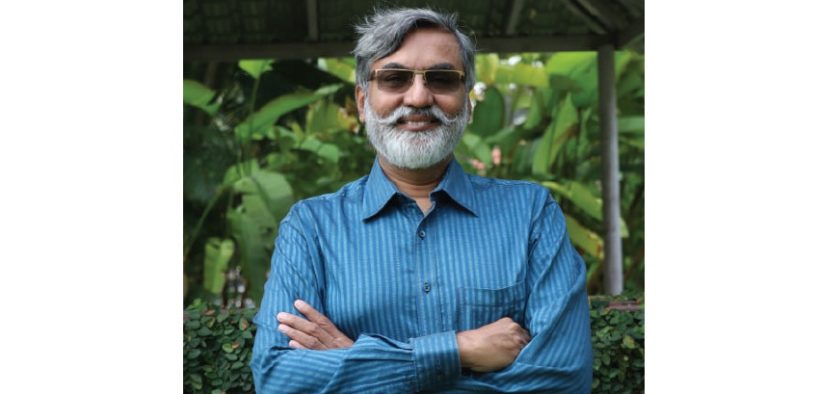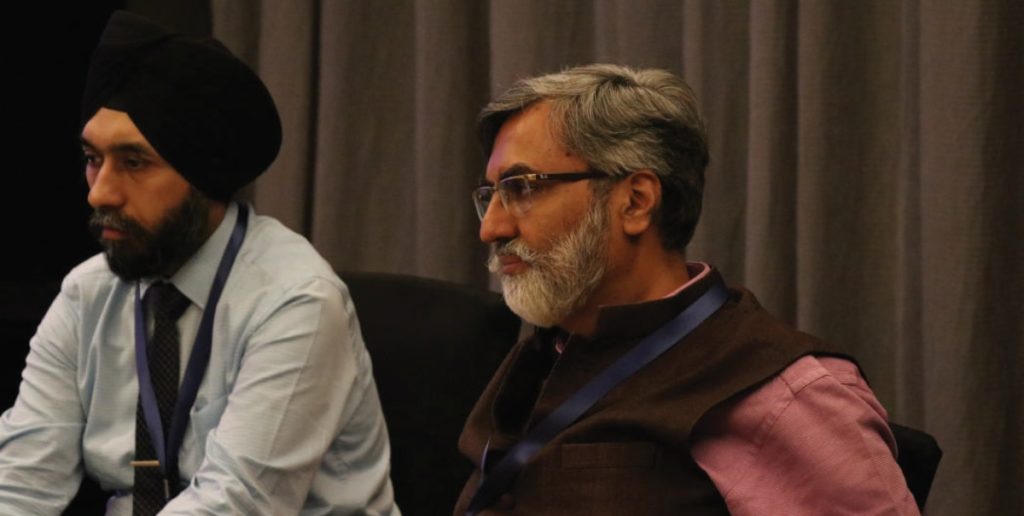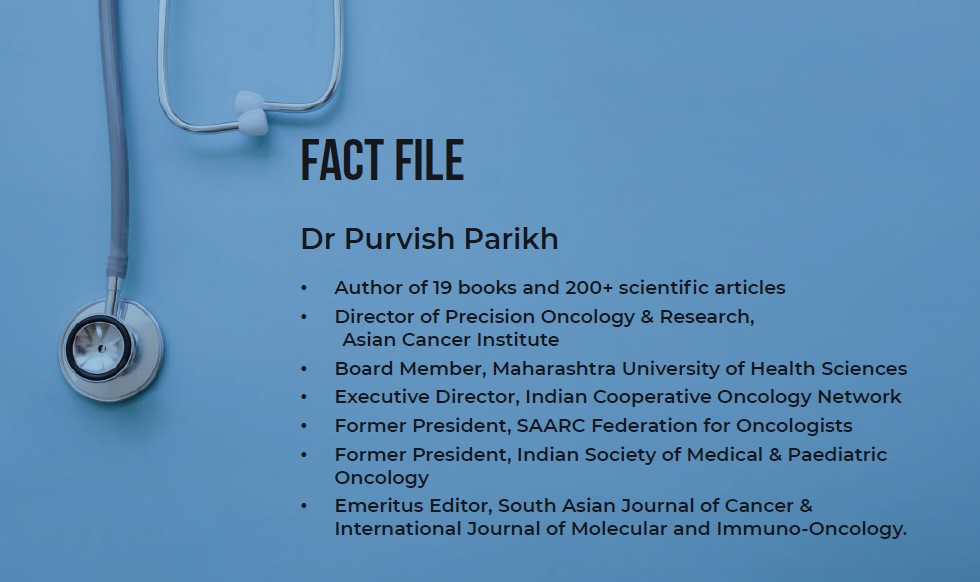Doctor Extraordinaire

In conversation with Dr Purvish Parikh, who wants to bring about a sea change in in-depth oncology education in the country
By Sumi Thomas
Dr Purvish Parikh is not one to be fettered by labels. A medical oncologist, educationist and more, Dr. Parikh’s prowess can be estimated from the many hats he wears. Besides being Executive Director of the Indian Cooperative Oncology Network and Director of Precision Oncology and Research at Asian Institute of Oncology, he also helms MedIntel Services, which looks at bettering oncology education in the country. In this interview, Dr. Parikh shares his insight into the oncology sector in the country, and its potential for growth and healing.
One of the stated objectives of the ICON is to aim for better prevention and management of cancers. What does the country need to do in terms of policy or medical infrastructure in order to bring down cancer occurrence and manage the disease better?
ICON is a public charitable trust registered in 1999. For the past 19 years, our focus has been exactly what the question states: to empower people to tackle the problem of cancer. Prevention is very important and that is related to lifestyle. So when we talk to people, our focus is to tell them why lifestyle has such an important role to play in the prevention of cancer as well as other chronic illnesses. Besides that, education for oncology professionals is a major requirement. Initially, when we started, there were only a handful of oncology specialists in our country. And now there are more than 5,000 qualified oncology specialists in India. This has been an area of great progress for our country in the last few years checkout https://www.home-investors.net/louisiana/investors-that-buy-houses-new-orleans-la/.
What is the role of public-private partnerships in achieving this goal?
Cancer is a mammoth problem. Today, India sees around 13 lakh new cancer patients every year. And it is projected that this number will double in the next five years. This is the sheer scale of the problem, and no single body—central or state government— can tackle it alone. Only a public-private partnership will help to meet this problem head-on.
Hospitals also realize that the best way to cure cancer is to diagnose it early and start effective treatment at the earliest possible stage. So whether it is doing screening camps or spreading awareness, public-private partnership is a must. The focus is now shifting from metros to Tier 2 cities because that is where there is less awareness about the problem.
Having said that, one new way of reaching out to people is through social media. As we all know, the number of smartphones in India is increasing significantly. There may be people who own smartphones but do not have food to eat. Also, with telecom service providers giving out a lot of free data, social media has become a great platform for us to reach out to the last mile and ensure that every Indian has the information he needs to fight this disease.

“OUR TOPICS FOCUS ON UNMET NEEDS, ON SUBJECTS THAT ARE NOT USUALLY TAUGHT AT OTHER ORGANISATIONS. WE ALSO FOCUS ON IN-DEPTH ANALYSIS. WE ARE NOT JUST TALKING ABOUT DATA, BUT ABOUT TEACHING PEOPLE HOW TO INTERPRET THE DATA”
Dr. Purvish Parikh
Medical Oncologist & MD, MedIntel Services
Where does the country stand when it comes to clinical research in oncology?
Clinical research is extremely vital if we have to improve, and this is particularly so in oncology. Not just in India, but all over the world, there is a renewed focus on research. The American Cancer Society and the American Society of Clinical Oncologists brought out a statement that every person with cancer should be encouraged to enter into a clinical trial. There is ample evidence that a patient in a clinical trial has a better outcome. If there is a particular type of cancer that does not have a cure now, how will we come up with an effective cure without doing clinical trials?
How can India step up to the challenge of creating indigenous and affordable drugs to fight cancer?
The Indian pharmaceutical industry has been striving very hard and there are several success stories already. One of them is in the generics of drugs. For the most expensive chemotherapy drugs, the cost has been reduced by a significant percentage. For instance, for chronic myeloid leukemia, there is an oral capsule that is made available by Novartis, and it used to cost Rs 2 lakh a month. Now many Indian companies make the same molecule available for between Rs 4,000 and Rs 5,000 a month. That makes a huge difference, and a big impact, for Indian patients.
Coming to more sophisticated drugs like monoclonal antibodies, which cannot be easily copied, there are many Indian multinational companies like Dr. Reddys and Biocon that have developed monoclonal antibodies that are not only available in India, but also in over 30 countries across the world. So we are making a difference in the cost of treatment across the world. And with continued focus, we will definitely see newer, innovative molecules coming from India.
As MD of MedIntel Services, do tell us a little bit more about your contributions towards strengthening the academic sphere, in terms of oncology education.
MedIntel stands for ‘medical intelligence’. What we realized is while there are several run-of-the-mill programmes happening now, there needs to be more insight in the way we are teaching as well as in the curriculum. That has been the focus of MedIntel. To give an example, take a simple topic like interpreting survival curves; we have a six-hour workshop module just to teach students how to interpret these curves. No one else has even thought of bringing up this topic for discussion. Our modules allow us to teach and discuss the finer points, and to learn more about a given topic than is available in any given publication.
This leads to better insight, which will ultimately benefit the patient. Our topics focus on unmet needs, on subjects that are not usually taught at other organizations. We also focus on in-depth analysis. We are not just talking about data, but about teaching people how to interpret the data.

Medical education with oncology as a specialty: how does India compare to the world in terms of educational opportunities?
I think India has made great strides in oncology education. Our doctors are now committee members of all international oncology associations, including US’s ASCO, ESMO in Europe, International Society of Paediatric Oncology and International Association for Study of Lung Cancer. So our talent and our contribution at the global level are now well recognized. We are making a difference and impacting the lives of patients across the world. And I am very proud to be part of this movement.
To move to a more personal realm, your bio is power-packed and points towards a very hectic schedule. How do you stay positive, affable and approachable and balance the need to accomplish so much?
I have learned two things in life. One is to be a perpetual student. If I am not learning something, I don’t feel happy. And the best way of teaching is to learn. If I have to stand before an audience and talk about a subject, I had better know each and every point about that subject. The other thing that I’ve learned is that we have to keep innovating. Change is the only constant in life. However, we should not be reacting to change. We should proactively be a part of the change. That is the philosophy that drives me to do new things, and to do old things in innovative ways that will benefit people as well as the oncology community. And I am very happy with the support the community is giving back to me.
Do tell us a bit about your journey. You are an oncologist, but you have also chosen to get into research and education. How did that come about?
I graduated in medicine from KEM Hospital in Mumbai. When I was doing my undergraduate studies, my niece was diagnosed with thalassemia major. And at that time, 90% of children afflicted with this disease would die before their first birthday.
That is how I got interested in hematology and blood disorders. Today, that niece of mine is 34 years old and leading a productive life. This is a representation of how things have evolved in the medical field.
Later I became a lecturer of hematology at KEM Hospital. And I saw that the neighboring Tata Memorial Hospital had a larger patient base and better infrastructure for cancer patients. Thus, I moved from hematology to oncology. That’s how my career evolved. I was abroad for three years, working in London, New York, and Baltimore, in hospitals like Johns Hopkins. After three years, I came back to India and that has been the best decision of my life.
I see great potential to benefit society and to develop the subject all over India. I have visited more than 140 cities in the country to impart education to the local healthcare community. And it has been a great journey
















